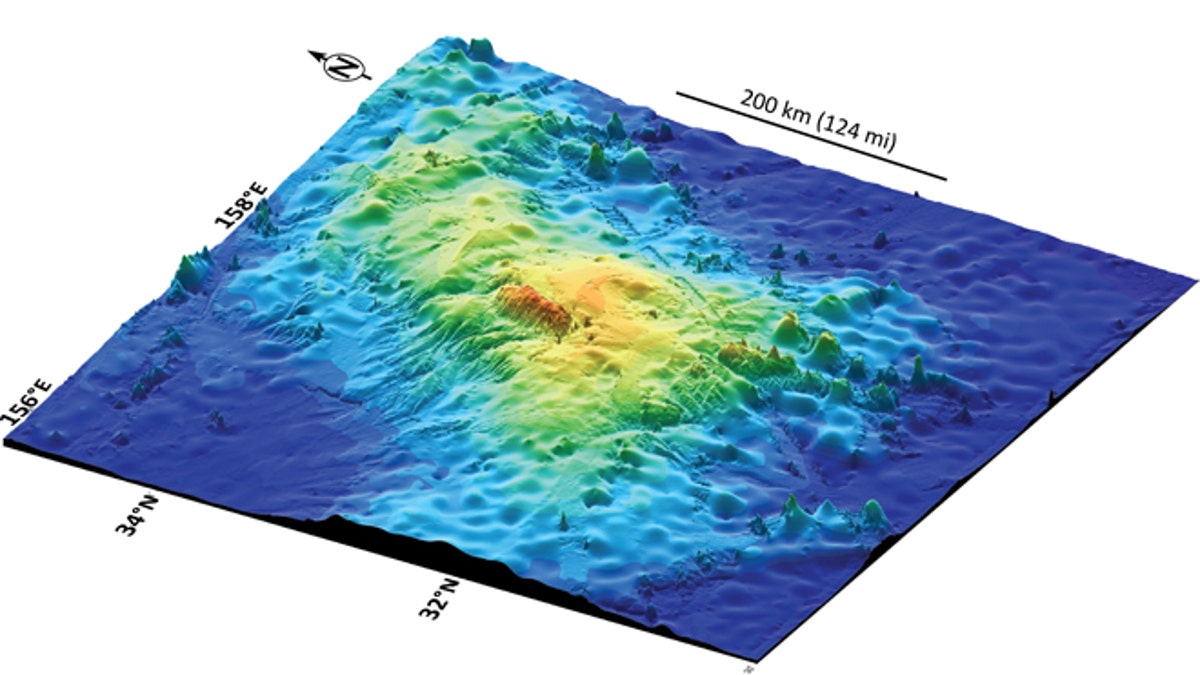
(Image courtesy of Integrated Ocean Drilling Program))
Scientists from Texas A&M University have discovered the single largest volcano on Earth.
But before anyone goes running for cover in fear of another Mount Vesuvius disaster, they should know that the 650-kilometer-wide behemoth the size of New Mexico is not only inactive but lies about 1,000 miles off the east coast of Japan and in waters that are in some parts four miles deep.
Despite its inactivity and relative inaccessibility, it will still be able to help geophysicists learn how the earth stores magma before it spews out onto the surface of the globe. The finding of the volcano on what is known as the Tamu Massif – one of three large mountains that make up an underwater range called the Shatsky Rise, about 1,500 kilometers east of Japan – also revealed that Earth can produce volcanoes on par with Olympus Mons on Mars, which, at 625 kilometers was previously believed to be the largest volcano in the solar system.
"It's not high, but very wide, so the flank slopes are very gradual," said William Sager, a professor in the Department of Earth and Atmospheric Sciences at University of Houston who began researching Tamu Massif two decades ago, according to Nature World News. "In fact, if you were standing on its flank, you would have trouble telling which way is downhill."
It was previously unknown whether or not the 145-million year old Tamu Massif, named after Texas A&M University where Sager previously worked, was a single volcano or a number of volcanoes. New research confirms that the basalt mass that constitutes the massif was formed by a single volcanic source near its center.
To put the size of the volcano into perspective, its area is about 60 times greater than Earth's most active volcano, Mauna Loa in Hawaii, which takes up about 2,000 square miles.
"Its shape is different from any other sub-marine volcano found on Earth, and it's very possible it can give us some clues about how massive volcanoes can form," Sager said. "An immense amount of magma came from the center, and this magma had to have come from the Earth's mantle. So this is important information for geologists trying to understand how the Earth's interior works."
While the Tamu Massif sits right now as the solar system’s biggest volcano, this is one of the first studies on the underwater giants and leaves speculation that larger volcanoes exist.
“There may be bigger ones out there,” Sager told Nature.com.
Follow us on twitter.com/foxnewslatino
Like us at facebook.com/foxnewslatino
